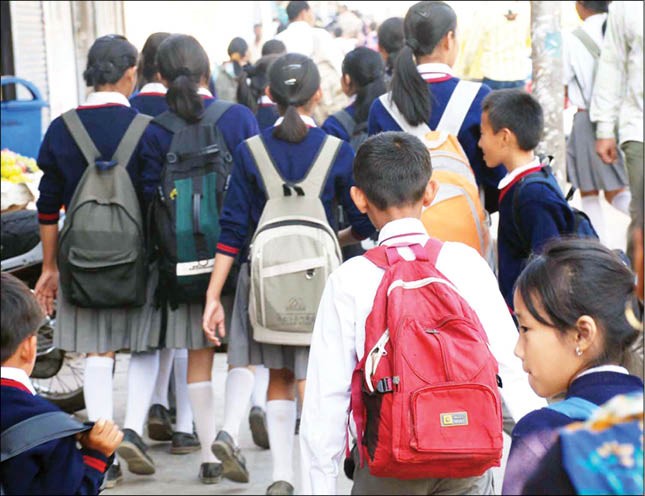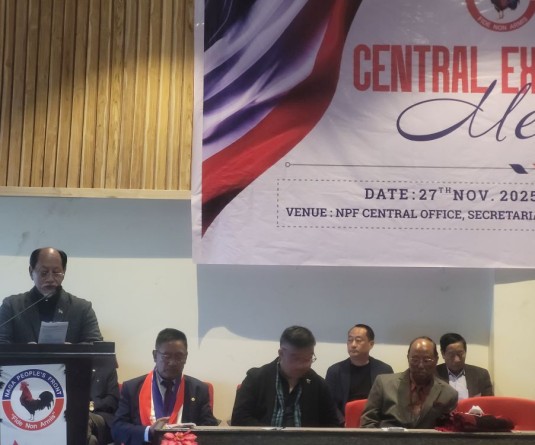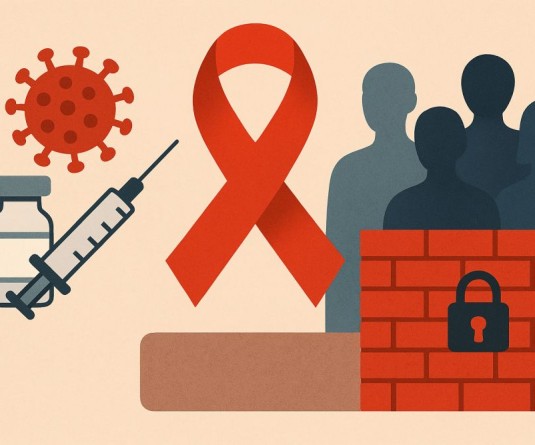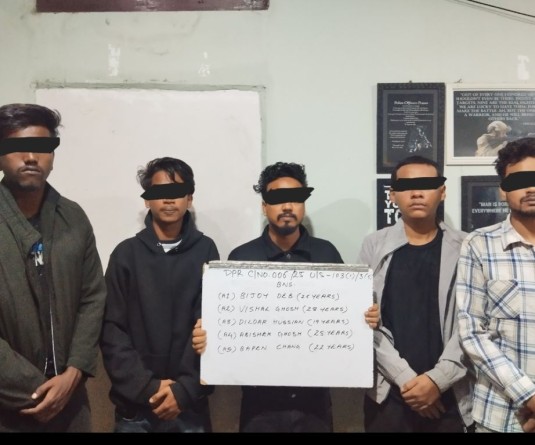Morung File Photo

ASER’s story of government schools in Nagaland
Morung Express News
Dimapur | March 1
Enrolment of elementary school children in rural Nagaland continues to be very high with 98.8% of all children in the age group 6-14 enrolled in schools in 2013 as against the national average of 96%.
This is the fifth consecutive year that enrolment levels of elementary school children in rural Nagaland have touched 96% or more, according to the Annual Status of Education Report (ASER) facilitated by Pratham, an NGO working exclusively for promotion of elementary education in the country.
ASER 2013 Nagaland (Rural) which was released Saturday at Pratham/ASER Dimapur centre, showed that enrolment in private schools in the State increased from 36.1% in 2010 to 39.4% in 2013.
ASER 2013 Nagaland survey covered 10 districts (excluding Longleng), 262 villages, 5972 households, 11869 children and 255 government schools with primary sections.
The report showed that though attendance in government schools is above the national average, attendance of both students and teachers has decreased over the years. In Nagaland, teachers’ attendance in primary schools (Standard I to V) decreased from 87.2 % in 2010 to 82.9% in 2013 while students’ attendance declined from 81.9% in 2010 to 78.4 % in 2013.
As per the report, 92.3% and 59.8% government schools in the State are following the Right to education (RTE) mandates on Pupil-Teacher Ratio (PTR) and Classroom-Teacher Ratio (CTR) respectively.
However, only 63.2 % schools have useable toilet facilities and more than 60% schools do not have a separate toilet provision for girls.
The reading ability among Class III and Class V students has shown slight improvement over the past years. According to the survey, the proportion of Class III students able to read at least Class I level text rose from 52.9% in 2010 to 62.4% in 2013, while those of Class V students who can read at least Class II level text increased from 52.6% in 2010 to 56.4% in 2013.
However, the report presented a bleak picture on the arithmetic front as the ability of the children to solve basic arithmetic presented a negative graph. According to the report, percentage of Class III children (all schools) who can do subtraction decreased from 85.6% in 2011 to 72.2% in 2013. Similarly, percentage of Class V students who can do basic division decreased from 40.5% in 2011 to 24.6 % in 2013.
Interestingly, the reported also stated that only 28 % of the government schools served midday meals of the day of visit of the ASER team.
In conclusion, the report stated that although enrolment at the elementary levels is very high, 9.1% of age group students, from 15-16 years, are dropping out. The report also stated that facilities in government schools need a lot of improvement as compared to other states. The report also put forth challenges ahead for states to guarantee elementary education.
The report was released in New Delhi in January this year, and is now being released in the various states of India. It is an all India report with state-wise sub sections.






